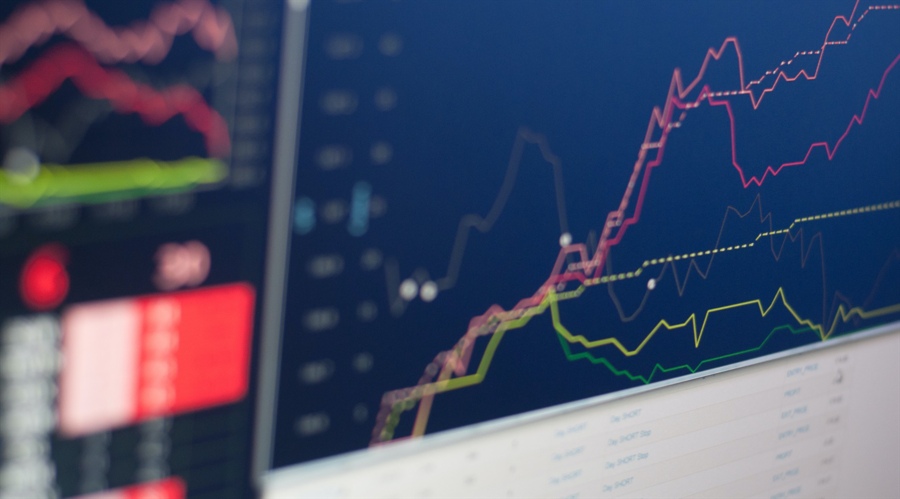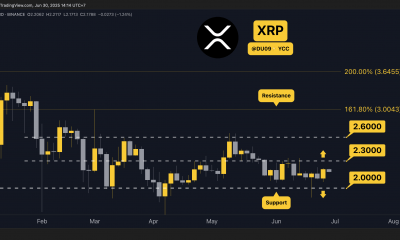Forex
MOEX’s Spot FX Sees Modest Uptick as Global Volumes Rebound in May

Demand for spot foreign exchange on the Moscow Exchange (MOEX) rose modestly to RUB 7.9 trillion ($98 billion) in May, which is a 4% gain over the previous month’s RUB 7.6 trillion ($94 billion). The increase from Russia’s largest exchange group tallies with higher spot volumes posted by other major institutional FX trading venues around the world.
MOEX’s Spot Volume Resists Fall in FX Market
According to trading volumes for May released on Friday, MOEX achieved a slight increase in spot FX volumes last month despite a 4% decrease in the overall FX market. Total forex volumes during the month came in at RUB 21 trillion ($260 billion), dropping from RUB 21.9 trillion ($271 billion) in the prior month. In addition, swap trades and forwards totaled RUB 13.1 trillion ($162 billion) last month, descending from RUB 14.3 trillion ($177 billion) a month earlier.
Comparatively, MOEX’s FX total forex market volume failed to beat stronger market activities in March when aggregate volume reached RUB 24.7 trillion ($306 billion). However, when compared year-over-year, overall FX volume in March soared by 31% from RUB 16.1 trillion ($199 billion) in May 2022.
Moreover, the average daily trading volume (ADTV) of forex activities on MOEX shrank by 8% to RUB 1,001.6 billion ($12 billion), which is down from RUB 1,093.6 billion ($14 billion) in the previous month. However, compared year-over-year, the ADTV expanded by 12% from RUB 892.3 billion ($11 billion) in May 2022.
Institutional Spot FX Demand Soars in May
Globally, activities in spot FX among institutional investors picked up in May, topping lower demands recorded in April. For instance, Cboe FX, an American spot FX trading platform, handled 18.2% more spot trading volume last month, with total trades valued at $938.9 billion.
Another American platform, FXSpotStream, which is New Jersey-based provider of multibank price streaming services for FX spot and swaps, saw $1.28 trillion in total monthly trading volumes in May. This represents an increase of 16% compared to $1.1 trillion in April.
In Europe, Deutsche Börse’s 360T, one of continent’s biggest institutional FX trading platforms, returned a 17% growth in spot volume, with trades valued at $593.6 billion in May. The volume jumped from $507 billion in the prior month.
Furthermore, Japan’s Click 365 reported a similar growth pattern as the total volume of FX daily futures contracts traded on the platform swelled by 31.4% to 24 million. This came at a daily average of 108,365 contracts. However, year-over-year, the Tokyo Financial Exchange-operated platform’s volume slumped by 17.3%.
Meanwhile, despite the increases in spot volumes in May, Cboe FX, FXSpotStream and 360T failed to outnumber trading activities from March 2023.

 Forex3 years ago
Forex3 years agoForex Today: the dollar is gaining strength amid gloomy sentiment at the start of the Fed’s week

 Forex3 years ago
Forex3 years agoUnbiased review of Pocket Option broker

 Forex3 years ago
Forex3 years agoDollar to pound sterling exchange rate today: Pound plummeted to its lowest since 1985

 Forex3 years ago
Forex3 years agoHow is the Australian dollar doing today?

 Cryptocurrency3 years ago
Cryptocurrency3 years agoWhat happened in the crypto market – current events today

 World3 years ago
World3 years agoWhy are modern video games an art form?

 Commodities3 years ago
Commodities3 years agoCopper continues to fall in price on expectations of lower demand in China

 Economy3 years ago
Economy3 years agoCrude oil tankers double in price due to EU anti-Russian sanctions



























